A three year journey to make Japan’s best Chikuwa.
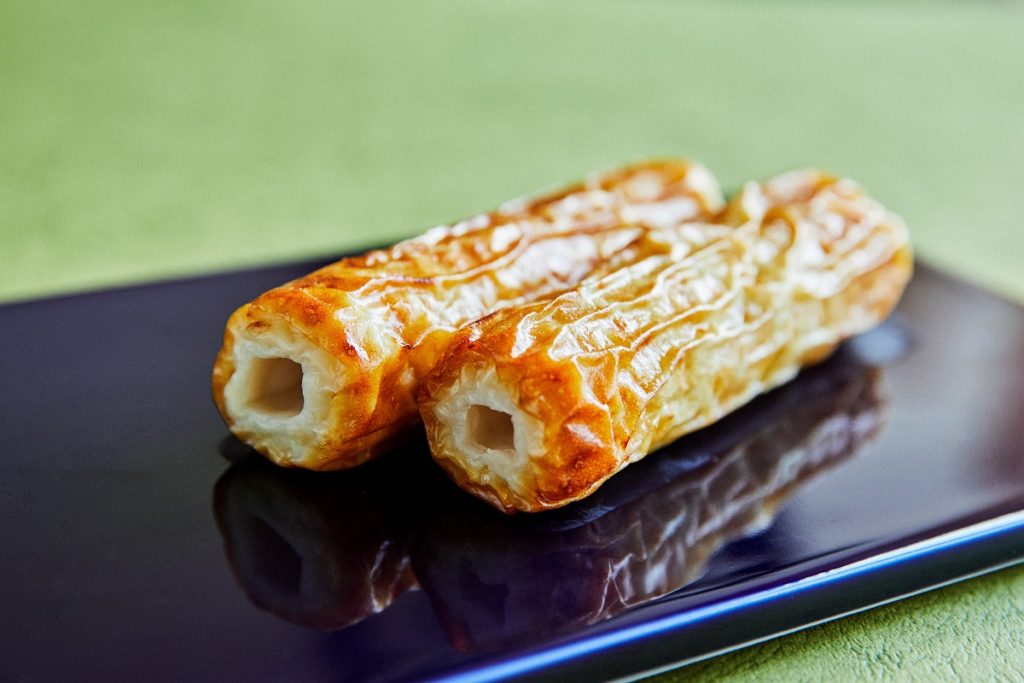
Chikuwa 竹輪 can be translated as “Bamboo Rings” because of their likeness to cut bamboo stalks. Chikuwa is fish paste that has been grilled on a skewer. It is a popular Japanese food enjoyed as an appetizer paired with beer or in a lunch box.
This Suzuhiro product is the “Hyakunen Chikuwa” (The 100 year chikuwa) and represents the accumulated knowledge, passion, and skill that craftspeople at Suzuhiro have gained over the past 100 years.
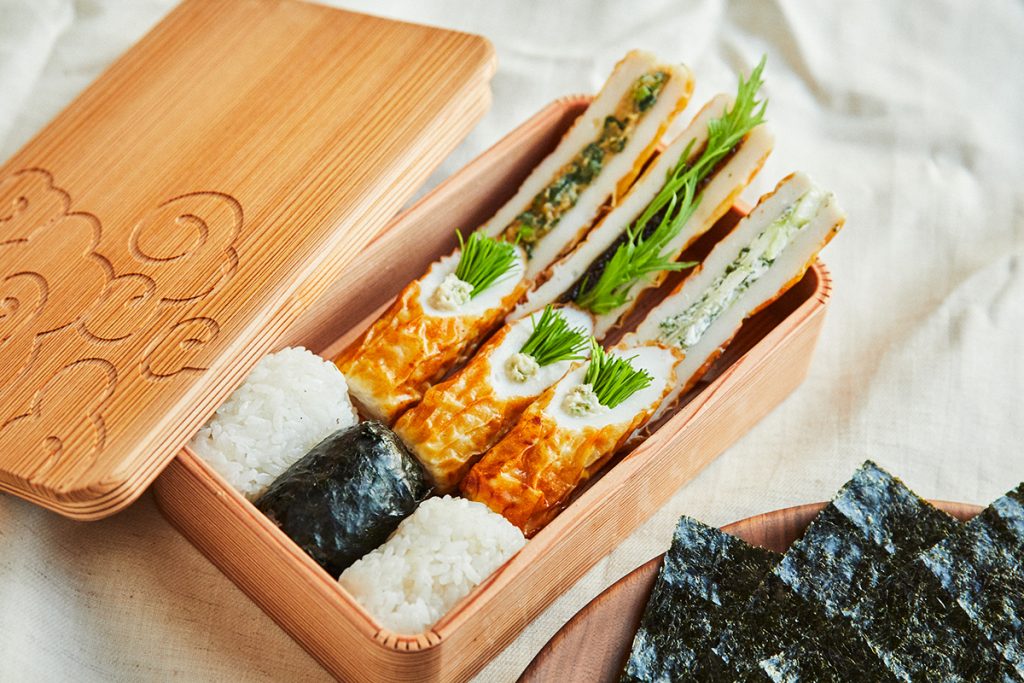
Suzuhiro`s Hyakunen Chikuwa was created over a period of three years in pursuit of the “best tasting Chikuwa in Japan”. The fish paste made specifically for Chikuwa is mixed with high-quality seafood broth and baked with a hint of sesame oil and ginger. In this article, we will take a closer look at the secret behind the creation and deliciousness of Suzuhiro’s “Hyakunen Chikuwa”.
A nationwide search for the best chikuwa in Japan
One day, the president of Suzuhiro gave me this order: “I want you to make the best chikuwa in Japan.”
Atsuko Nagaoka, who was in charge of the product development of Hyakunen Chikuwa, says, “I had been involved in the development of various products for Suzuhiro, but the development of Hyakunen Chikuwa left a particularly strong impression on me.”
For reference, she asked the president, “What is the best Chikuwa you have ever had? I was puzzled when he replied, ‘The one I made by carefully mincing, making into surimi, and grilling myself. Then I bit the freshly grilled chikuwa.’ That must be delicious, right? The bar has just been raised a notch.”
To accomplish this mission, Atsuko started by eating Chikuwa from all over Japan in search of the ideal Chikuwa.
In addition to Chikuwa, she also went to Shikoku to compare Jako-Ten (fish cake) and encountered all kinds of Chikuwa, from very long ones to ones as big as Baumkuchen cakes.
The skin of Chikuwa has the flavor and aroma of grilled fish.
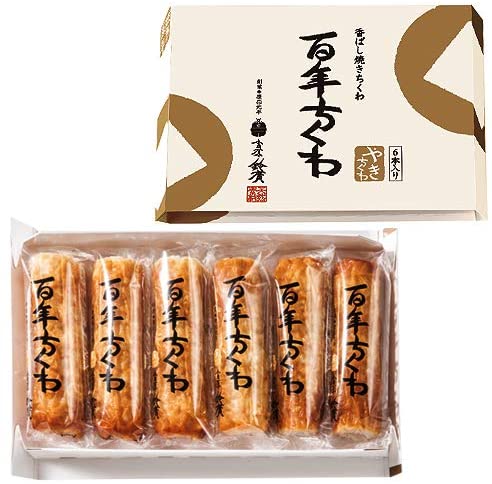
It took three years of trial and error. We finally came up with Hyakunen Chikuwa.
Our goal was to achieve the savory taste and aroma of Himono which is a Japanese traditional sun-dried, brined fish. We wanted to bring out the natural amino acid flavor that is produced when fish is grilled to the skin of the chikuwa.
In order to reproduce the savory flavor of the fish, we developed a method of mixing the dashi stock into the surimi and spraying it on the surface of the Chikuwa right after it is formed. We use a clear soup stock made from mackerel and niboshi (dried sardines), which is slowly steeped overnight. The surimi is originally made of high quality fish, but the addition of this broth adds a rich flavor. In addition, the surface of the dashi glaze, when grilled, becomes fragrant, just like crispy grilled salmon skin. The secret flavors of sesame oil and ginger are also added to give it a deep, layered taste.
Crispy skin, crunchy texture, plump flesh
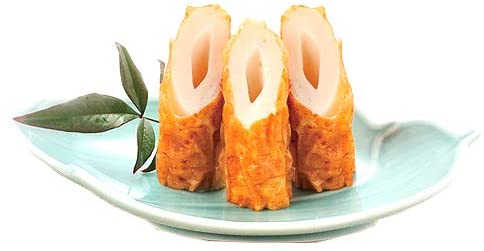
The grilling process is just as important to the taste of the bamboo rings as the surimi making process. The key is to grill them quickly over high heat, as they will become hard if you take too long to grill them. However, the surimi can quickly burn or swell if it is cooked on high heat, so you cannot take your eyes off it even for a moment. The temperature needs to be carefully adjusted by opening and closing the oven lid to accommodate the slightest changes in the surimi. In the summer, the room temperature can reach nearly 50 degrees Celsius, and the craftsmen keep a close eye on each piece.
The grilled Chikuwa are crispy and fragrant on the outside and juicy on the inside. The meat is thick, so you can feel the elasticity and the flavor of the fish every time you bite into it.
“The flavor of the fish is the best part of the dish, so I would like you to enjoy it by biting into the whole piece with conviction.” Nagaoka suggests, “I recommend eating it as it is, but if you have room, lightly roast it in a frying pan or toaster to get the freshly roasted aroma and flavor.
A Special Kamaboko
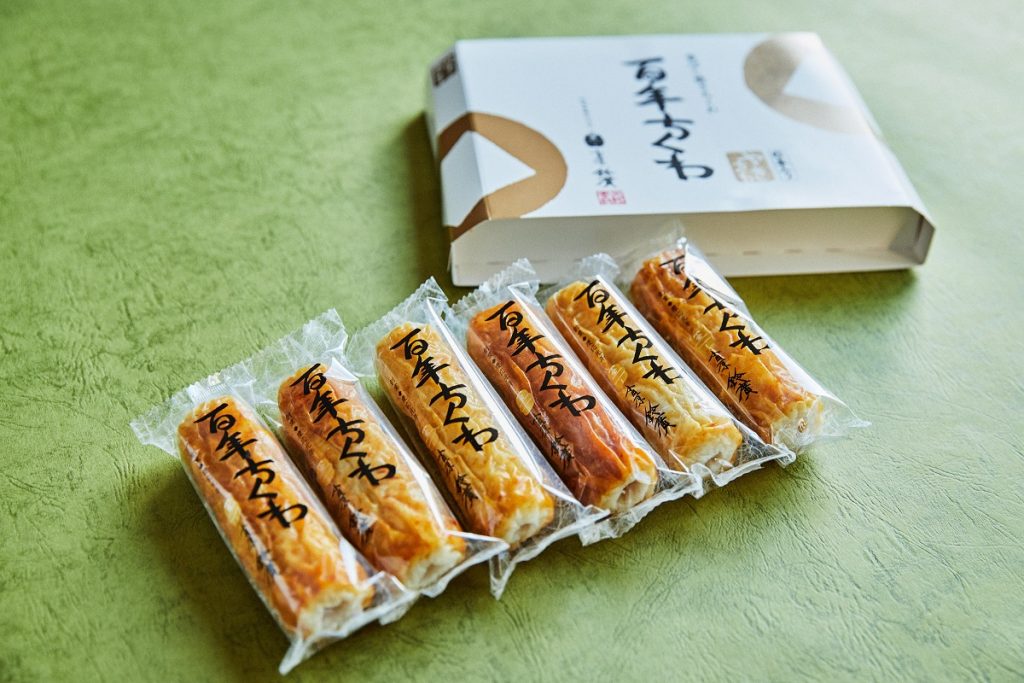
Kamaboko first appeared in literature in the Heian period (794-1185) in the book Ruiju Zoyosho. The shape is similar to today’s Chikuwa, and it seems that fish meat was put on a wooden stick and grilled.
It is a luxury item because the fish is not just grilled and eaten, there is a long process of preparation to make Chikuwa. As Nagaoka says, Chikuwa was originally one of the luxury products and the true form of Chikuwa is to be the star of the show, giving a sense of satisfaction with just one piece.
The Hyakunen Chikuwa is made with Suzuhiro’s techniques that have been handed down for over a hundred years, with the desire to make authentic Chikuwa. We hope you enjoy the taste of our products.
Photography by Hiyori Ikai, Written by Tomoyo Tsuchiya, Translated by Jeffrey Garrish